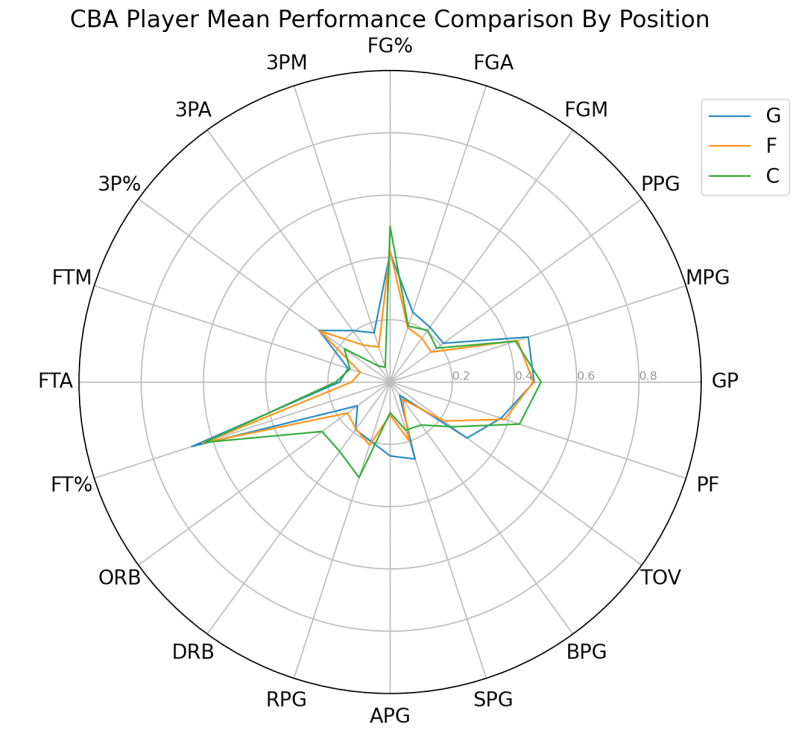| CV |
Email |
Google Scholar |
|
I am a freshman at the Carnegie Mellon University, advised by Cy Gage. I currently major in Statistics and Machine Learning. My research interest lies in applying computational and statistical knowledge in fields like sports analysis and sustainability to make people's lives better. Goal: Robots that improve everyone's life. Focus: How to build the data flywheel for robotics to unlock human-level athletic skills and semantic intelligence? How to make robots perform useful tasks with adaptability, generalizability, agility, and safety? Method: Utilizing learning-based methods that scale with computation and data. Robots: I love working on humanoids and aim to make them capable of doing everything I can do—and more. Email: jacky2@andrew.cmu.edu |

|
journal |
PDF |
abstract |
bibtex
This study uses player performance statistics from the Chinese Basketball Association for six seasons, from 2017 to 2022, to evaluate the statistical characteristics of guards, forwards, and centers. 20 key performance indicators including points per game, rebounds, assists, shooting percentages, etc. are employed to provide empirical evidence to identify the singular traits that have come to be associated with each position. The study uses eight different machine learning models -- Decision Tree, Linear Discriminant Analysis, Multinomial Logistic Regression, Naive Bayes, Neural Network, Random Forest, Support Vector Machine, and XGBoost -- for position prediction of players from their performance data. From the results, it can be learned that guards are much more adept at scoring, assists, steals, and three-point shooting; forwards are better rebounders and three-point shooters; centers are proficient in rebounding, blocking, and field goal percentage. Among all the considered predictive models, Random Forest and XGBoost have the best test accuracies, while some models are clearly overfitted. This study suggests that using an ensemble machine-learning approach on performance data in the CBA context works particularly well when predicting player’s position. The study contributes to a better understanding of positional attributes in professional basketball and provides methodological references for future research in the field of sports analytics.
@article{yu2024cba,
title={Analysis and Prediction of CBA Player Position Data Characteristics Based on Machine Learning},
author={Yu, Yuanzheng},
journal={American Journal of Applied Mathematics and Statistics},
volume={12},
number={4},
pages={75--79},
year={2024},
publisher={Science and Education Publishing},
doi={10.12691/ajams-12-4-1},
url={https://pubs.sciepub.com/ajams/12/4/1/index.html}
}
|

|
Website Code |
iOS App Code |
Official IG
A student-led initiative that uses a personal carbon accounting platform designed for teenagers to help them cultivate sustainable living habits as part of youth environmental education. 10+ schools worldwide have used CarbonTrack in their campus. |
|
Not Yet 2025
|
|
|
Website template from here. |